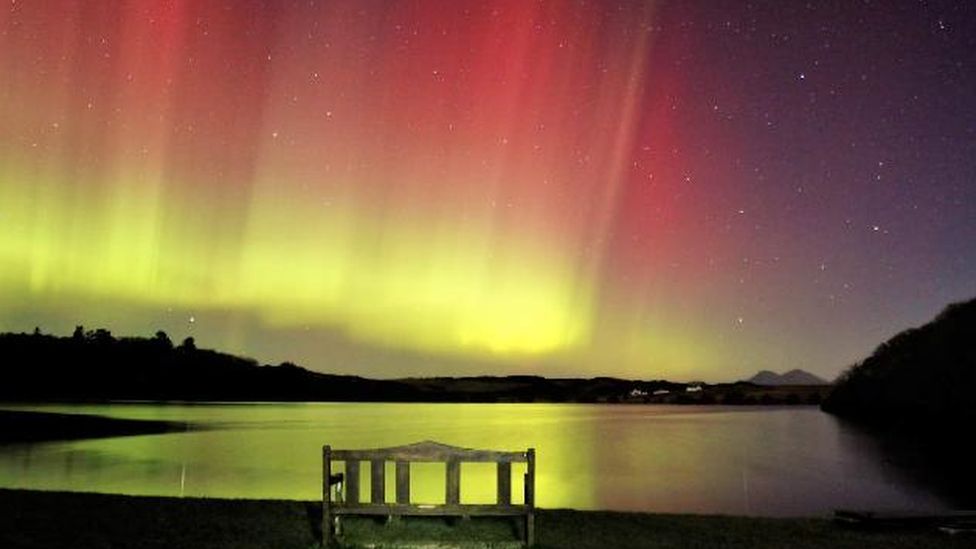
With Australia having now rung in the new year already, plenty of us will be setting off fireworks later to see in 2025.
But the rockets and Roman candles won’t be the only thing lighting up the skies with colour tonight (December 31) thanks to a more natural phenomenon.
The Met Office has confirmed that the northern lights could be visible in the UK for seeing in the new year in style.
Typically, the aurora borealis is only seen in more northern areas, with people travelling to the likes of Iceland and Finland specifically in the hopes of seeing them.
However, as we know from some huge moments over the last year, they are sometimes visible further south, above our own homes.

Now that would be a New Year’s Instagram post. (Getty Stock)
And this evening could be a bit of a repeat of that with the Met Office predicting the northern lights could be visible in a wider area this evening.
“The auroral oval is likely to remain at background levels initially,” it explains in its aurora forecast for the Northern Hemisphere.
“However, from 31 Dec, a Coronal Mass Ejection (CME) is forecast to arrive at Earth with a risk of G1-G2/Minor-Moderate geomagnetic storms which could produce visible aurora across Scotland, Northern Ireland and parts of northern England. Slight chance of a G3/Strong storm.”
British Solar Astrophysicist Dr Ryan French also took to X to explain: “The Sun has really stepped up over the past few days, with frequent solar flares including a strong X-class event! A selection of these flares produced Earth-directed eruptions, expected to trigger a strong geomagnetic storm (bringing aurora) on the 31st!”
Although it’s probably worth noting how terrible the weather is going to be tonight across much of the UK when you’re hoping for a clear view.
It was previously explained that the aurora borealis are set to be visible further south than usual more often in the next year due to a flip of the Sun’s magnetic field.
.jpg)
Forget fireworks, give me the northern lights. (Getty Stock)
This shift in the sun’s magnetic field happens every 11 years or so and we’re currently at the tail end of ‘solar maximum’.
Basically, this is when there’s a peak in the number of sunspots, with solar flares being fired out and causing those iconic northern lights, which may as well start paying rent at this point. That would be the British thing to do anyway.
Space Weather Manager of the Met Office Space Weather Operations Centre (MOSWOC) Krista Hammond explained: “We’re now in the solar maximum phase, which means there’s more frequent sunspots and solar activity in general. While it’s not possible to know precisely what this means for individual Earth-directed solar events, it does mean there will likely be further chances of aurora visibility in the UK in the coming months.”
Scientists generally agree the solar maximum is going to be reached in 2025 and this would mean the area where the northern lights are visible will get even wider.